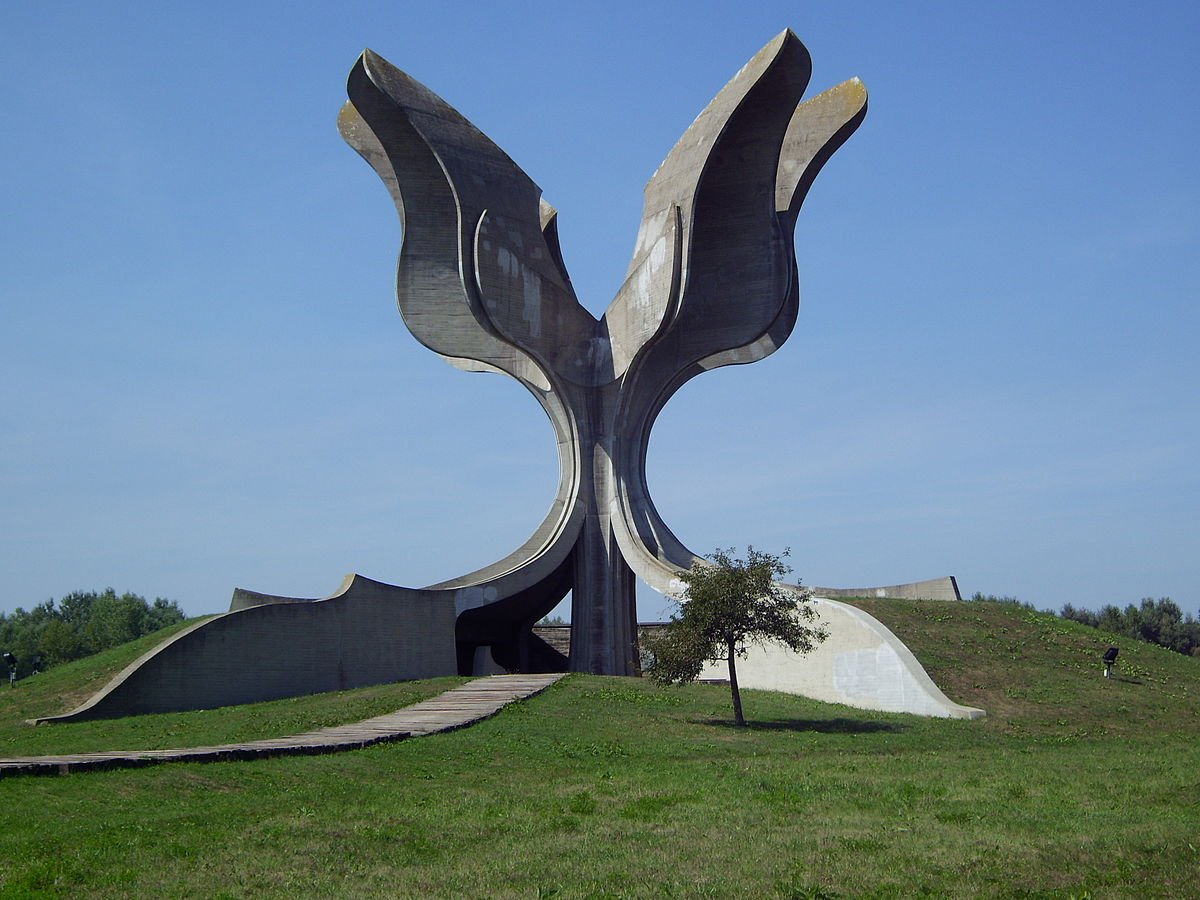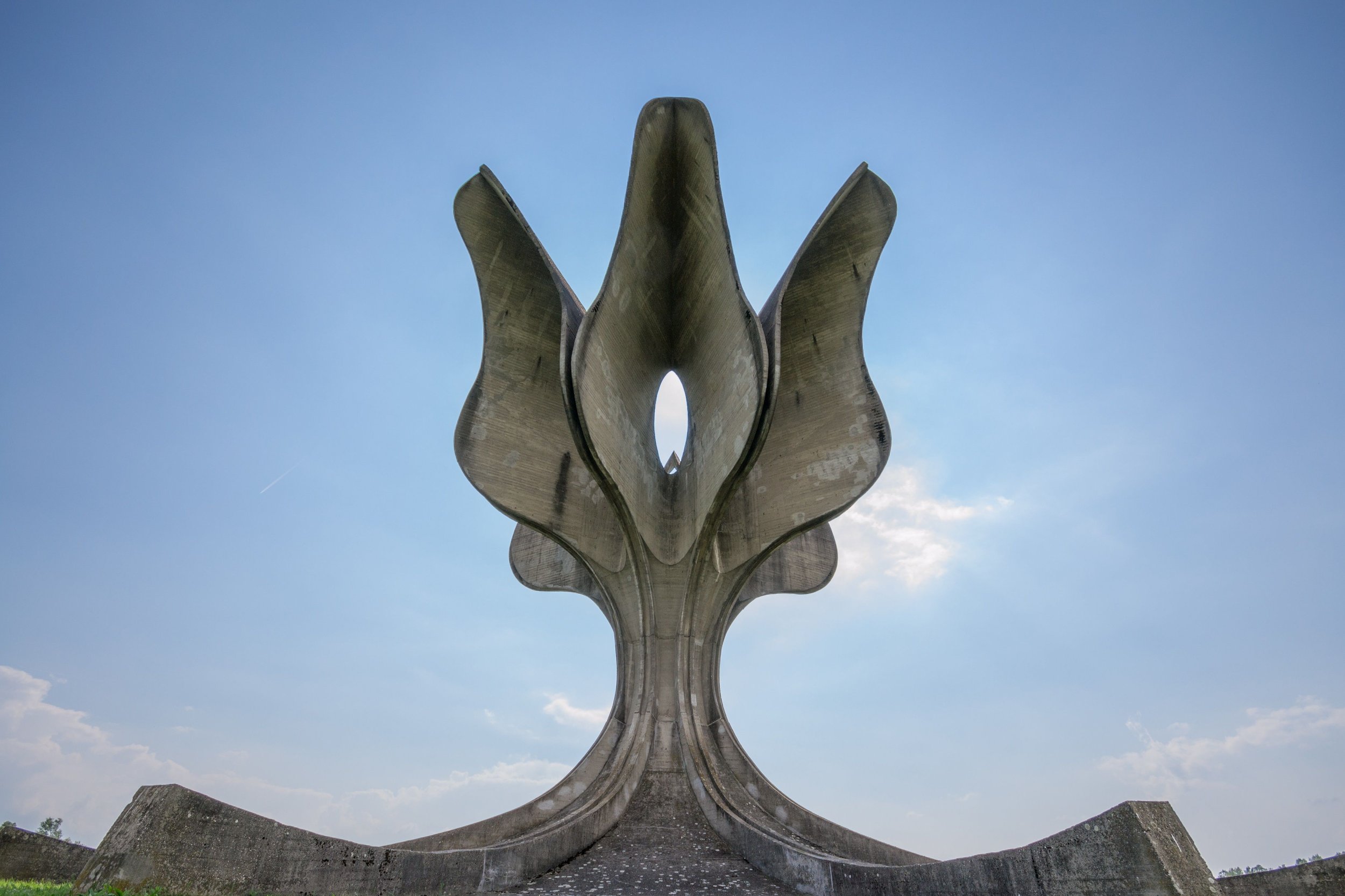Spomeniks: Yugoslavia’s Post-Liberation Alien Architecture
As the windowless Dacia SUV hurtled down the dirt track, we were violently thrown against the sides of the vehicle. In traditional Bosnian fashion, the seatbelt buckles were blocked by plastic, preventing the naive fool who would take safety precautions. Accompanying the constant jostling, a sonorous Balkan singer whined from the radio. Our new friend and driver, Majdas, turned around from the front seat.
With a toothy smile, she flippantly stated the area still had landmines, but as long as we stayed on the road - a two-track mud path - we would be okay. After what felt like an eternity of stony shrubs, stray dogs, and elderly grandmothers with pomegranates in one hand and a walking stick in the other, we spotted a white flash. Like two claws pointing towards some unknown heaven, the Spomenik finally emerged from the barren mountainside.
Spomeniks are monuments constructed in the 1960s and 70s under the Tito dictatorship. These ethereal structures were erected to commemorate Yugoslavia’s independence struggle against the Nazi party. Using the most unglamorous of construction materials, concrete, the socialist federation of Yugoslavia commissioned architects and urban planners to dot the Balkan countryside with these monoliths. Their aim was to bring attention to the liberation of these seven Slavic nations, and their rosy future. Yet, in a rather ironic way, these radical brutalist structures seem to arrest, rather than liberate, the attention of the onlooker.
Miodrag Živković and Đorđe Zloković, Monument to the Battle of the Sutjeska (1965-71), Tjentište, Bosnia and Herzegovina.
Photo by Valentin Jeck, commissioned by the Museum of Modern Art, New York (2016)
Indeed, these monuments are lauded for their otherworldly aesthetic. They are completely out of scale for commemorative statues of the time. The conventional understanding of a monument is often a life-size metal replica of some nameless army commander, sitting regally atop a gold-leafed pedestal. Spomeniks take this definition, and completely usurp it. They are commanding towers of concrete, blurring the line between figuration and abstraction.
To the untrained eye, they seem as if they were left behind by alien civilizations.
Berislav Šerbetić and Vojin Bakić, Monument to the Uprising of the People of Kordun and Banija (1979–81), Petrova Gora, Croatia.
Photo by Valentin Jeck, commissioned by the Museum of Modern Art, New York (2016).
For example, this striking metal construction could easily be the inspiration for the Heinz Doofenshmirtz Evil Incorporated headquarters. Or, the album cover for a popular New Zealand psychedelic band (perhaps named Unknown Mortal Orchestra?). Instead, it exists to memorialize the deaths of ethinc-Serb peasants.
However, this specific Spomenik is known for being completely devoid of utilitarian function. When the sun is set at an exact right angle to the horizon, the polished metal panels are illuminated by the sun in a brilliant golden show of colors. It is a symbolic lighthouse, embodying the properties of “light overcoming darkness”. It is a pure poetic conquest of space.
Of course, this unearthly aesthetic was no mistake. The architects behind the claws and cages were attempting to create a new unique narrative. The Tito regime was making an active effort to de-emphasize Yugoslavia’s Soviet connections, and thus the figurative socialist-realism style.
However, they also didn’t want to follow the burgeoning artistic movements of Western Europe, a region that has ruled over the Balkans, both physically and ideologically, for the majority of its history. Yugoslavia was finally its own, and Tito wanted to find an architectural style that could unite and commemorate a land that was inhabited by both the victims and perpetrators of the Second World War.
Hence, the architects created this de-contextualized abstract architecture style, embodying the hyper-forward looking universalism of Yugoslavia.
The artistic influence did not belong to any nation, so that it could be uniquely owned by the Balkans. The entire reason the Spomeniks exist is to express the atmosphere of unity, looking towards the future of peace.





